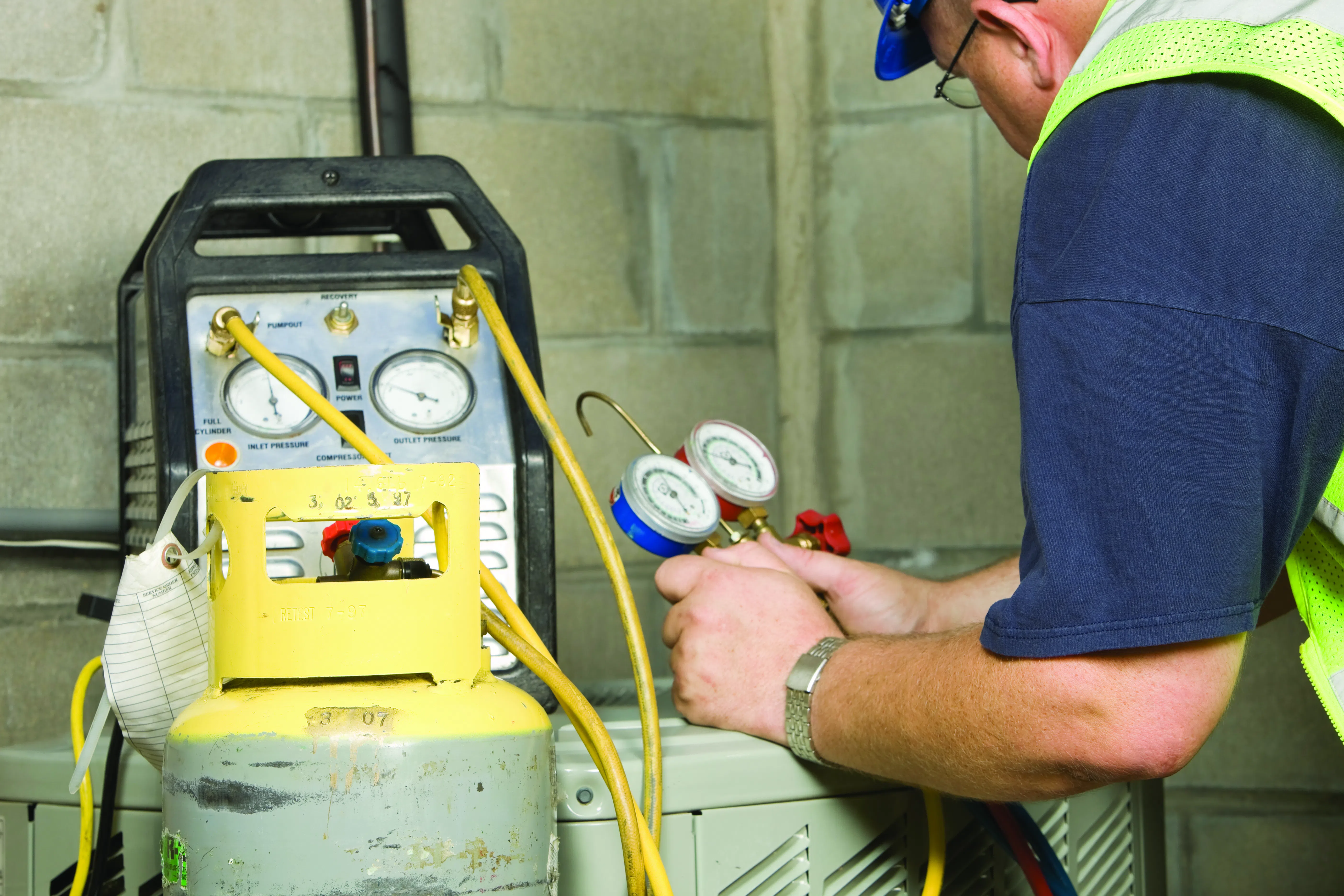The Clock is Ticking
As the U.S. EPA begins implementing the American Innovation and Manufacturing (AIM) Act, the refrigerant transition in the United States is officially underway. The AIM Act’s phasedown schedule mirrors Kigali Amendment’s and will phase down HFC use in the U.S. by 85%in 15 years based on a 2011-13 baseline. Currently, the EPA is building its refrigerant baseline and determining refrigerant allocations for the first step of the phasedown, which could begin for some sectors as early as next year. And, while we still need to nail down many details, it’s worth exploring some of the key issues that will affect HVAC contractors in the next several years.
A2L REFRIGERANTS A2Ls, as categorized by ASHRAE, are the new class of low-GWP refrigerants we expect to replace the phased down HFCs in most applications. Globally, A2Ls have been used safely for years: More than 8 million mini-split systems using R-32 and more than 68 million automobile air conditioners using A2Ls have been installed. However, since A2Ls are new to the United States, and these replacement refrigerants are mildly flammable, safety and training are significant issues. A2Ls are not likely to start a fire on their own, but regulators have safety concerns regarding a fire started elsewhere that could come into contact with the refrigerant.
In spring, 2021, the Air Conditioning, Heating and Refrigeration Institute (AHRI) and the Underwriters Laboratory (UL) conducted a series of tests to determine the flammability and safety of A2Ls relative to currently used HFCs like R-410A. These tests found that A2Ls did not produce fire flashes or noticeably increase the flame size when exposed to open fire sources such as candles or burning furniture. Thus, while some consider A2Ls mildly flammable tests showed they are not more likely to ignite a fire than HFCs.
AHRI also formed the Safe Transition Task Force to provide contractors, firefighters, and policymakers with resources such as articles, webinars, videos, and guides to support the safe transition to this new class of refrigerants.
BUILDING CODES
One of the major issues yet to be resolved with the transition to A2L refrigerants is incorporating new safety codes and standards in state and local building codes. States and local jurisdictions typically use either the Uniform Mechanical Code (UMC) or the International Construction Code (ICC) as the model for their building codes. While [? Who] updates these model codes every four years, states and localities need to incorporate them into their codes — a less certain process. Currently, both the UMC and ICC model codes incorporate the standards for the safe production and installation of equipment using A2Ls and should be available for state and local building codes to use ahead of the scheduled 2024 code cycle.
Some states are pre-emptively forcing the issue because they recognize a potential problem. For example, Washington, Oregon and Texas have recently passed legislation that bars state and local building codes from prohibiting any EPA approved refrigerant after 2023. This type of legislation forces states and local jurisdictions to update their building codes to allow R-32 and R-454B, the two most likely A2L candidates to replace R-410A in residential and light commercial air-conditioning applications. AHRI is lobbying other states to adopt similar legislation ahead of the transition to avoid situations in which HFC refrigerants are no longer available but building codes do not allow for their A2L replacements.
SECTOR-BASED CONTROLS
The AIM Act allows stakeholders to petition the EPA for sector-based controls, which place GWP limits and implementation dates on specific applications. AHRI has submitted petitions asking for these controls for residential and light commercial air-conditioning and comfort chillers; they also submitted two petitions for commercial refrigeration applications.
The GWP limits and implementation dates for air-conditioning and comfort chillers are similar to those put in place by the California Air Resources Board, or CARB. AHRI asked that both air-conditioning and comfort chillers receive a GWP limit of 750, with that enforcement beginning Jan. 1, 2024, for chillers and precisely one year later for air conditioning.
The petition for commercial refrigeration, however, deviated from the controls CARB plans to implement. CARB’s overall greenhouse gas reduction targets are ambitious and, to meet those goals, the agency must reduce emissions from refrigerants already in use. To do so, CARB collaborated with food retailers to develop a weighted-average GWP approach whereby grocers can focus on reducing GWP (down to 1,400) across their entire portfolio rather than seeking a reduction in every individual store. This allows food retailers to upgrade stores with new low GWP systems that will pay back the initial investment while managing less profitable locations with existing equipment. For newly built stores or systems, CARB is mandating a GWP of 150 or less, essentially pushing new systems with natural refrigerants like CO2 or very low-GWP HFOs.
Unlike CARB, the EPA is only interested in using sector-based controls to regulate new commercial refrigeration systems. The EPA has already approved non flammable A1 refrigerants R-448A,R-449A, and R-449B as acceptable substitutes in commercial refrigeration applications. These refrigerants, with GWP's around 1,400, are viewed as transitionary,allowing lower-GWP refrigerants before building codes are fully updated to allow for very low-GWP A2Ls and HFOs. Asa first step, AHRI submitted a petition asking the EPA to impose SNAP Rules20 and 21, which several states have already implemented, and prohibit certain HFCs and limit GWP’s to 1,500 or 2,200by 2022 or 2023, depending on the application. In step two, AHRI will likely petition the EPA to limit GWP’s in most commercial refrigeration applications to 300 by 2026 to allow for building codes to update.
A POTENTIAL HFC SHORTAGE
While the AIM’s HFC phasedown schedule begins in 2022, the first significant drop in production and consumption comes in 2024, when the EPA will reduce available supply by 40% from its baseline. In addition, to accommodate building codes, AHRI is petitioning the EPA to begin enforcement of GWP limits for residential and light commercial air-conditioning, by far the industry’s largest consumer of HFC’s, on Jan. 1, 2025. This dynamic creates the environment for a potential HFC supply shortage in 2024 as the EPA begins its phasedown in earnest before the industry is ready to transition to A2Ls.
To avoid this scenario, AHRI, through its comments to the EPA’s proposed allocation rule, is asking the agency to allocate HFCs to producers and importers in 2022and 2023 and then re-evaluate the situation in 2024. The industry, meanwhile, is making plans to ramp up its available supply of reclaimed refrigerant to help compensate for any shortfall.
CONCLUSION
Just a year ago, the refrigerant transition in the U.S. seemed precarious, at best.States were going their own way, and the AIM Act looked like a long shot. The industry was preparing for a fragmented regulatory landscape and a transition that was anything but smooth. Now, that same transition is looking a lot smoother.Challenges, however, remain. For example, building codes must be updated to allow for A2Ls, and, should an HFC shortage occur in 2024, it might force some in the industry to transition to new refrigerants faster than they expected. However,these challenges are manageable, and, with a little harder work, a safe transition is within reach. To prepare for the new refrigerants, contractors should review there sources AHRI has provided on the safe transition. They should also engage in the proper training for transporting, handling and installing A2L refrigerants.




